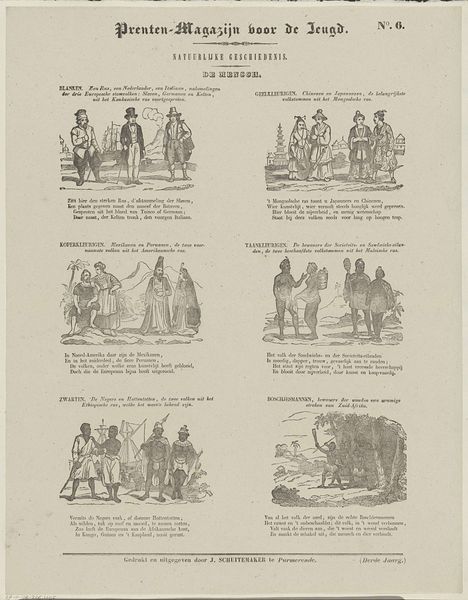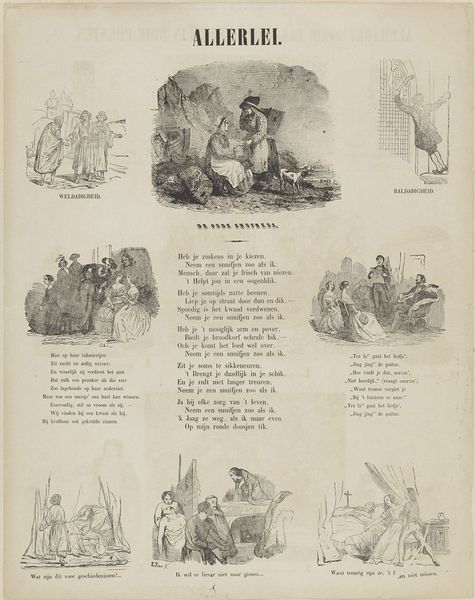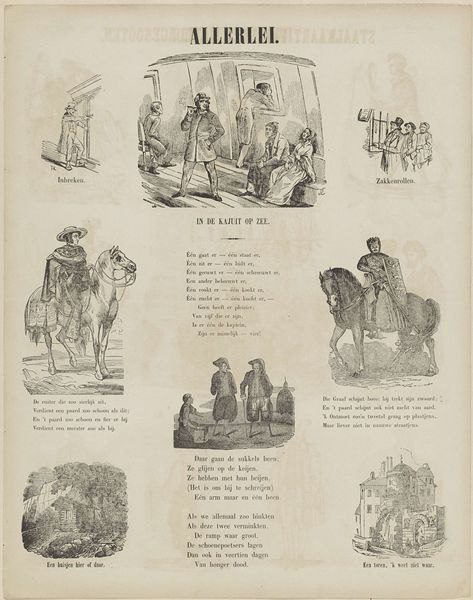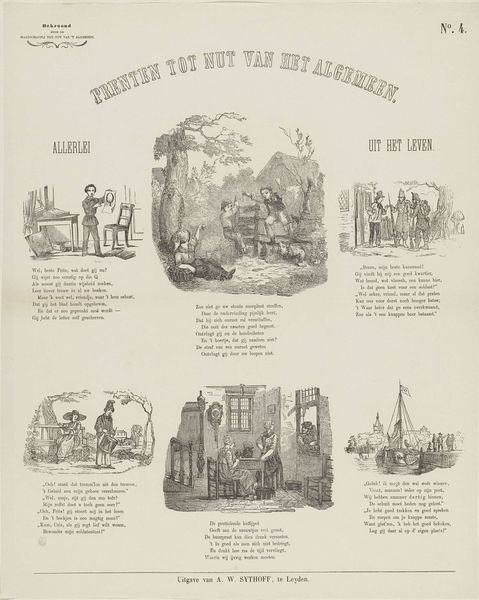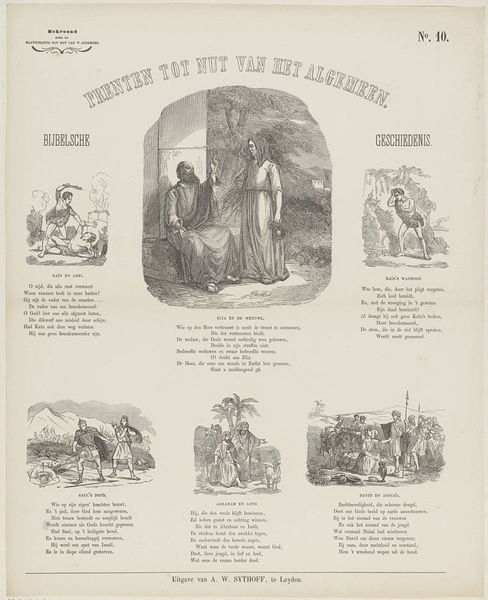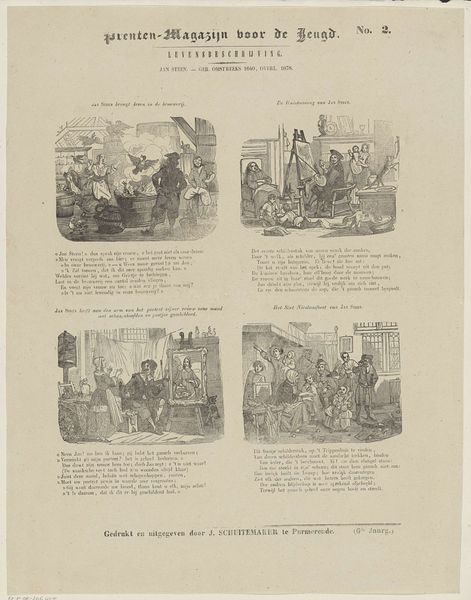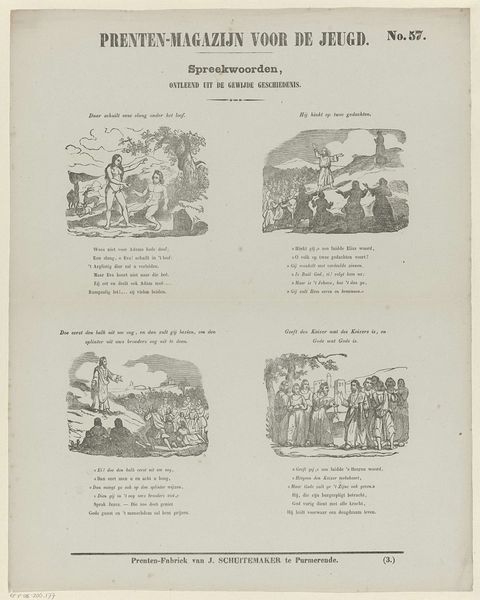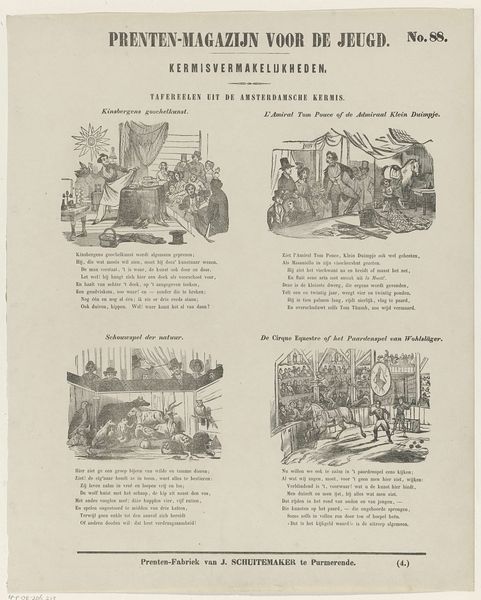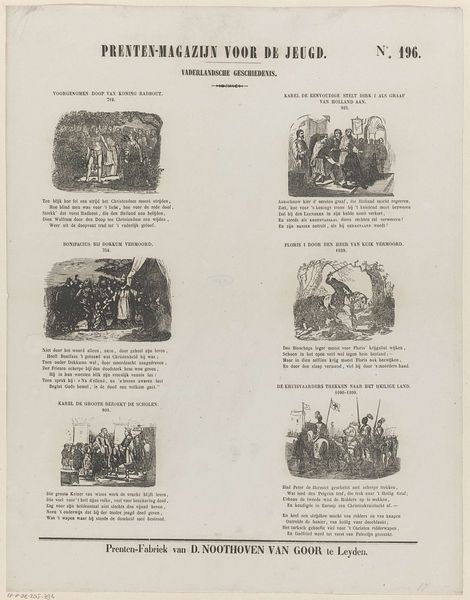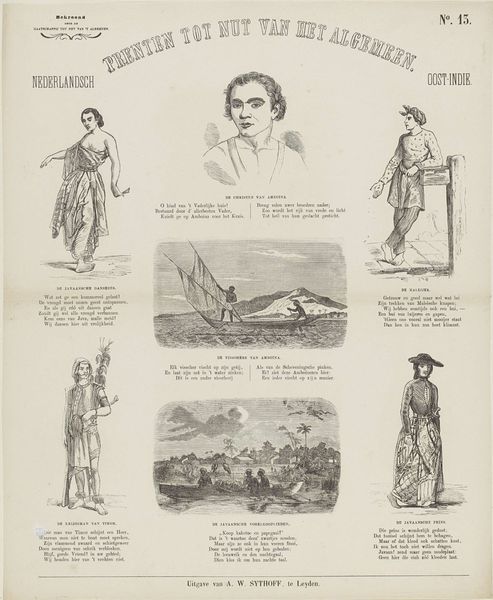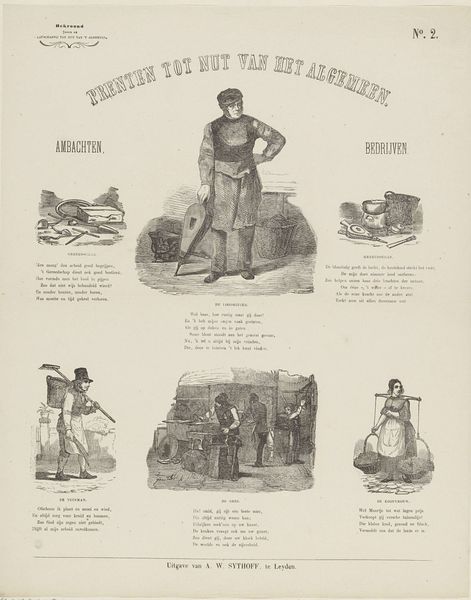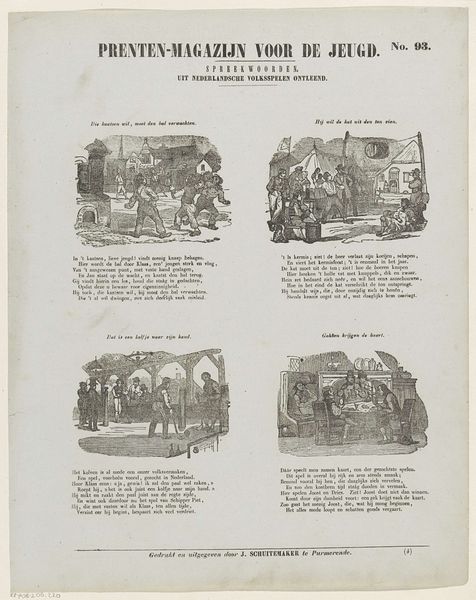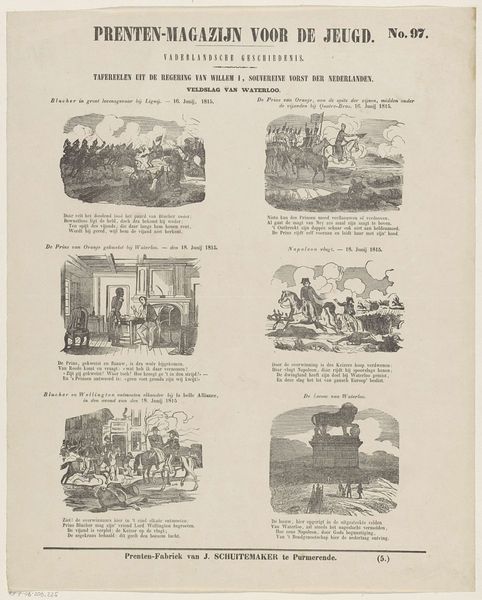
print, engraving
#
portrait
#
narrative-art
#
dutch-golden-age
# print
#
old engraving style
#
history-painting
#
engraving
Dimensions: height 423 mm, width 340 mm
Copyright: Rijks Museum: Open Domain
Editor: This print, titled "Vaderlandsche Geschiedenis," from sometime between 1861 and 1929, showcases scenes from Dutch history in an old engraving style. It's got this almost textbook-like feel, a historical document aiming to educate. What historical narratives are being promoted here? Curator: That's a brilliant question, and it gets to the heart of understanding this piece. These “Prenten tot nut van het Algemeen” – Prints for the Benefit of the Public – were explicitly designed to shape a particular understanding of Dutch national identity. What do you notice about the figures and events selected? Who is prominently featured, and perhaps more importantly, who is absent? Editor: I see a lot of powerful men represented. There's what looks like depictions of William of Orange. It feels celebratory, like it's focusing on moments of victory and leadership. Is it glossing over certain aspects of history in favour of creating a national hero narrative? Curator: Exactly. Consider the period it was produced, a time of nation-building and solidifying collective memory. These images helped construct a narrative that privileged certain groups and perspectives. The engraving simplifies complex realities of conflict, potentially obscuring the violence, resistance, and the experiences of marginalized groups. The emphasis is on unity and a heroic vision of the past. What effect do you think this kind of selective representation had on the development of Dutch national identity? Editor: So it wasn't just about remembering history, but about actively creating a specific version of it? Highlighting the actions of few elite people rather than the multitude? Curator: Precisely. And that raises vital questions about how historical narratives are constructed and whose stories are amplified, and whose are silenced. We should use works like this to better consider the impact and complexities of constructing cultural identity, its legacies, and who these exclusions might affect even today. Editor: This print seems a great place to think about how representations shape what we think we know about our past.
Comments
No comments
Be the first to comment and join the conversation on the ultimate creative platform.

